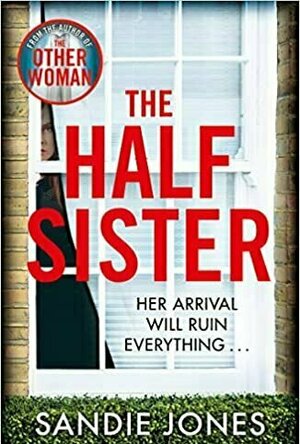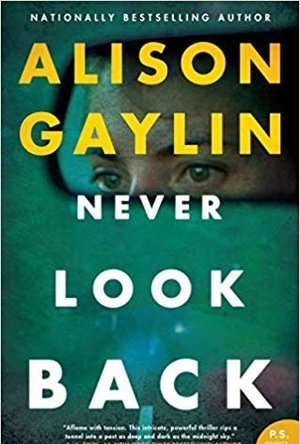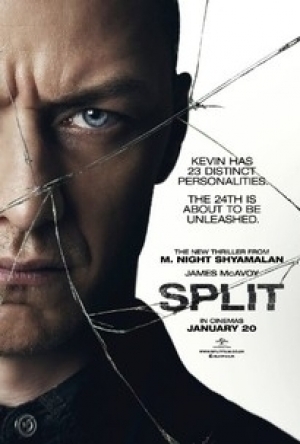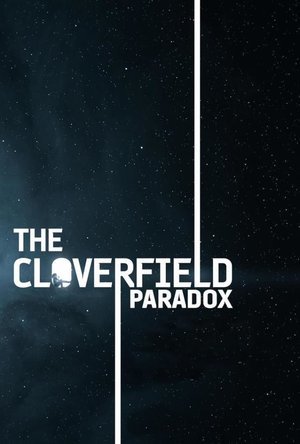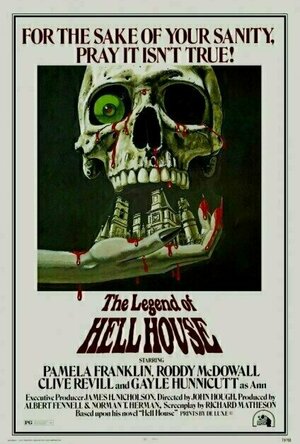Search
Search results
Ivana A. | Diary of Difference (1171 KP) rated The Half Sister in Books
Oct 5, 2020
I am so happy to have the opportunity to be part of the blog tour for The Half Sister by Sandie Jones. Thank you to the team at Pan Macmillan, for sending me a copy in exchange for an honest review.
About The Author:
I have heard a lot about Sandie Jones, but I haven’t read any books by her prior to The Half Sister. Sandie Jones has worked as a freelance journalist for over twenty years, and has written for publications including the Sunday Times, Woman’s Weekly and the Daily Mail. She lives in London with her husband and three children. The Other Woman is her debut novel.
Synopsis:
I need to mention that the original synopsis of the book may be a bit misleading. Lauren and Kate are two sisters, but they don’t get along too well and their relationship is complicated.
Kate is a reporter, married to lovely Mark, and going through many rounds of IVF treatment, hoping to start a family. Kate had a very close relationship with her father until the day he died, but was never too close to her sister Lauren and their mother, Rose.
Lauren, on the other hand, is a full time mom of three, with a demanding and overprotective husband. She is very close to her mum, and had a complicated relationship with her father, never forgiving him for understanding her in the past.
One day, while Kate, Lauren and their mum are having their usual Sunday roast, a woman knocks on their door and drops a bombshell. Jess claims to be their half-sister.
This allegation is met with denial - how could she be a secret daughter of their father. Their mother is devastated, Lauren is not surprised, and Kate doesn’t believe Jess at all. But as more secrets start to unravel, no one can know who to trust anymore…
My Thoughts:
I loved the idea of this book, even though I am not too big of a fan of domestic mysteries and drama. My impressions were that this would’ve been more psychological thriller, but I was in the wrong. However, despite this, the book is really surprisingly well-written and kept me on my toes until the very end.
The lives of Lauren and Kate in particular were very well written. I can imagine people being able to easily relate to their struggles. The difference between the two sisters is like night and day. I loved the fact that this book was not sugar coating this, and it didn’t end it with a “happily ever after”. Instead, it ended with “we know we are different, and we are working to fix our relationship in its natural course”.
The story about how Jess comes into their lives, and the whole DNA situation was extremely not believable. As well as the fact that doing another DNA test at the beginning of the novel would have solved all assumptions, rather than people believing hearsay and creating more drama. However, I am also aware that drama was needed to keep the story going, so I can’t hold a grudge.
The ending was predictable half-way through the book. Some scenes are completely unnecessary and make the story more complicated. There are many triggering moments in this book. Cheating, domestic violence and abuse, both physical and emotional and abortion. This book may also trigger people that have had difficult relationships with their parents and/or siblings.<br/><br/>Even though not a favorite thriller, I enjoyed this book and recommend it to everyone that loves domestic thrillers. It is a fast-paced read, and the plot twists are juicy.
About The Author:
I have heard a lot about Sandie Jones, but I haven’t read any books by her prior to The Half Sister. Sandie Jones has worked as a freelance journalist for over twenty years, and has written for publications including the Sunday Times, Woman’s Weekly and the Daily Mail. She lives in London with her husband and three children. The Other Woman is her debut novel.
Synopsis:
I need to mention that the original synopsis of the book may be a bit misleading. Lauren and Kate are two sisters, but they don’t get along too well and their relationship is complicated.
Kate is a reporter, married to lovely Mark, and going through many rounds of IVF treatment, hoping to start a family. Kate had a very close relationship with her father until the day he died, but was never too close to her sister Lauren and their mother, Rose.
Lauren, on the other hand, is a full time mom of three, with a demanding and overprotective husband. She is very close to her mum, and had a complicated relationship with her father, never forgiving him for understanding her in the past.
One day, while Kate, Lauren and their mum are having their usual Sunday roast, a woman knocks on their door and drops a bombshell. Jess claims to be their half-sister.
This allegation is met with denial - how could she be a secret daughter of their father. Their mother is devastated, Lauren is not surprised, and Kate doesn’t believe Jess at all. But as more secrets start to unravel, no one can know who to trust anymore…
My Thoughts:
I loved the idea of this book, even though I am not too big of a fan of domestic mysteries and drama. My impressions were that this would’ve been more psychological thriller, but I was in the wrong. However, despite this, the book is really surprisingly well-written and kept me on my toes until the very end.
The lives of Lauren and Kate in particular were very well written. I can imagine people being able to easily relate to their struggles. The difference between the two sisters is like night and day. I loved the fact that this book was not sugar coating this, and it didn’t end it with a “happily ever after”. Instead, it ended with “we know we are different, and we are working to fix our relationship in its natural course”.
The story about how Jess comes into their lives, and the whole DNA situation was extremely not believable. As well as the fact that doing another DNA test at the beginning of the novel would have solved all assumptions, rather than people believing hearsay and creating more drama. However, I am also aware that drama was needed to keep the story going, so I can’t hold a grudge.
The ending was predictable half-way through the book. Some scenes are completely unnecessary and make the story more complicated. There are many triggering moments in this book. Cheating, domestic violence and abuse, both physical and emotional and abortion. This book may also trigger people that have had difficult relationships with their parents and/or siblings.<br/><br/>Even though not a favorite thriller, I enjoyed this book and recommend it to everyone that loves domestic thrillers. It is a fast-paced read, and the plot twists are juicy.
Kristy H (1252 KP) rated Never Look Back in Books
Sep 2, 2019
For Quentin Garrison, his podcast, entitled Closure, is truly about just that--closure. It centers on a series of murders in the 1970s committed by teens Gabriel LeRoy and April Cooper. The victims included Quentin's mother's little sister and his grandmother. As a result, Quentin has spent most of his life raised by a neglectful, drug addict mom. For Robin Diamond, a columnist, the podcast causes only confusion. When Quentin contacts her about it, asking specifically about April Cooper and tying her to Robin's own mother, Robin is bewildered. But the more she delves into the murders, the more she starts to wonder. Then there's a terrible home invasion at her parent's house, killing her father and leaving her mom unconscious. What exactly happened back in the '70s--and, now, in the home invasion?
This was an excellent thriller that had me hooked from the first page. It's dark, gritty, and utterly mesmerizing. When I started it, I was thinking to myself, not another podcast mystery, but little did I know... this book is totally addictive and brings in the podcast element in a seamless, fresh way.
It's told from the perspective of several of our main characters--particularly Robin and Quentin. We also get excerpts from a school assignment of April's when she was fifteen: letters to her future child. These slowly reveal what happened during the killings, and they are told in a spot-on voice of a fifteen-year-old girl. The way everything is woven together is perfect: I found myself completely captivated and read basically the last half of the book in one breathless setting, staying up past my bedtime to finish it.
We learn that both Gabriel and April died in a fire at the site of their last attempted murder. So when Quentin receives a tip claiming that April Cooper is still alive, it changes everything, including the focus of his podcast. When he starts to believe that Robin's mother is April, things get even more interesting. I loved the suspense--constantly wondering if April was alive and if she was, who she could be. And then, there's the aspect of was April "good" or "bad" during the killings. So many people blamed her for the deaths of their loved ones, and nothing is black or white in this book.
Even Quentin. Since his past is strongly affected by the murders, we find ourselves wondering if we can trust him, too. Quentin's grandfather basically gave up raising his daughter, Kate--Quentin's mother--after the death of his wife and young daughter. As such, Quentin's own mother wasn't much of a parent to him. Quentin's own bitterness and anger shines through--a strong theme in the book. Can we rely on someone so angry, we wonder? I felt for him, and his devoted husband and loving best friend and podcast partner. So many of the characters are intense, and each is so well-crafted and unique. Each flew off the page.
This is often a dark book, and there are many scenes of violence. But, for me, it was the emotional scenes that were the toughest to read. There are many touching moments, too, and I found myself attached to several of the characters. Reading young April's letters was quite a feat. Gaylin is such an excellent writer, and she just pulls you into the story so effortlessly--you feel as if you are there with her characters. Throw in some great twists and turns and this is an excellent and suspenseful novel.
The ending was a tough one, but I get it. Overall, I really enjoyed this dark psychological thriller. I am just loving Gaylin's recent books and need to go back and read some of her previous works (there's a little Brenna Spector shoutout in this one for those of you who are fans). Definitely recommend! 4.5 stars.
This was an excellent thriller that had me hooked from the first page. It's dark, gritty, and utterly mesmerizing. When I started it, I was thinking to myself, not another podcast mystery, but little did I know... this book is totally addictive and brings in the podcast element in a seamless, fresh way.
It's told from the perspective of several of our main characters--particularly Robin and Quentin. We also get excerpts from a school assignment of April's when she was fifteen: letters to her future child. These slowly reveal what happened during the killings, and they are told in a spot-on voice of a fifteen-year-old girl. The way everything is woven together is perfect: I found myself completely captivated and read basically the last half of the book in one breathless setting, staying up past my bedtime to finish it.
We learn that both Gabriel and April died in a fire at the site of their last attempted murder. So when Quentin receives a tip claiming that April Cooper is still alive, it changes everything, including the focus of his podcast. When he starts to believe that Robin's mother is April, things get even more interesting. I loved the suspense--constantly wondering if April was alive and if she was, who she could be. And then, there's the aspect of was April "good" or "bad" during the killings. So many people blamed her for the deaths of their loved ones, and nothing is black or white in this book.
Even Quentin. Since his past is strongly affected by the murders, we find ourselves wondering if we can trust him, too. Quentin's grandfather basically gave up raising his daughter, Kate--Quentin's mother--after the death of his wife and young daughter. As such, Quentin's own mother wasn't much of a parent to him. Quentin's own bitterness and anger shines through--a strong theme in the book. Can we rely on someone so angry, we wonder? I felt for him, and his devoted husband and loving best friend and podcast partner. So many of the characters are intense, and each is so well-crafted and unique. Each flew off the page.
This is often a dark book, and there are many scenes of violence. But, for me, it was the emotional scenes that were the toughest to read. There are many touching moments, too, and I found myself attached to several of the characters. Reading young April's letters was quite a feat. Gaylin is such an excellent writer, and she just pulls you into the story so effortlessly--you feel as if you are there with her characters. Throw in some great twists and turns and this is an excellent and suspenseful novel.
The ending was a tough one, but I get it. Overall, I really enjoyed this dark psychological thriller. I am just loving Gaylin's recent books and need to go back and read some of her previous works (there's a little Brenna Spector shoutout in this one for those of you who are fans). Definitely recommend! 4.5 stars.

Blissful Birth by Glenn Harrold & Janey Lee Grace: Advice & Self-Hypnosis Relaxation
Health & Fitness and Education
App
Blissful Birth is the ultimate app to help you before, during and after giving birth. Having a...

Hello Next! Forget your ex.
Entertainment and Lifestyle
App
Just broke up? Haven’t seen your ex for a while but your heart is still broken with no one there...

My Dictionary Pro
Education and Entertainment
App
Do you want to learn a foreign language quickly? A unique program for memorizing words will help you...
Bob Mann (459 KP) rated Split (2016) in Movies
Sep 29, 2021
“We are what we believe we are”.
M. Night Shyamalan fizzed into movie consciousness in 1999 with “The Sixth Sense” which – having rewatched it again recently – still has the power to unnerve and impress even after knowing the famous ‘twist’. Since that film and his next, “Unbreakable” in 2000, Shyamalan has ‘done a bit of an Orson Welles’ by never really living up to that early promise. Here with “Split” he returns to better form with a psychological thriller that is heavy on the psycho.
James McAvoy plays Kevin… and Dennis, and Patricia, and Hedwig, and Barry, and Orwell, and Jade, and… if the running time permitted… another 17 characters. But this is no “Kind Hearts and Coronets”: McAvoy plays all these varied personalities in the same body. For Kevin suffers from Multiple Personality Disorder, a rare condition where his different schisms not only affect his speech and attitude but also his whole physique. One personality for example is diabetic and needs insulin: all his others are fine.
Under the care of MPD specialist Dr Karen Fletcher (Betty Buckley, “Carrie”), Kevin seems to be making good progress. But all is not as it seems. Dennis, one of the more evil of Kevin’s personalities, has kidnapped three teens – Claire (Haley Lu Richardson), Marcia (Jessica Sula) and Casey (Anya Taylor-Joy) – and is holding them captive in his home.
It’s all going so well. Kevin (James McAvoy) getting much needed treatment from Dr Fletcher (Betty Buckley).
While Claire and Marcia are good friends, Casey is the wild-card in the pack: a moody and aloof teen that doesn’t fit in with the crowd. We see the abduction unfold largely through her intelligent and analytical eyes, with her experiences causing flashbacks to hunting trips in the woods as a five-year-old child with her father and uncle.
This is McAvoy’s film, with his different personalities being very well observed and the scenes where he switches from one to the other being particularly impressive as piece of acting. Of the youngsters, Anya Taylor-Joy is the most impressive, with the denouement of her particular sub-plot being my favourite part of the film.
Shyamalan, who also wrote the script, is treading a well worn cinematic path here (since often the MPD element is the surprise twist, to list any films here inevitably risks major spoilers – – but there is a decent list here). But this is a film that seems to have generated a lot of interest, particularly with a younger audience (I have seldom been quizzed more with the “Ooh, have you seen this yet” question). As a result this may be a modest sleeper hit.
Girl pray or Girl prey? Casey deep in the psycho’s lair.
Where I think the movie missteps is in its casting of the three cute and scantily dressed teens as the abductees. From the plot of the film that emerges this appears to be unnecessary and exploitative, especially since they are made to progressively dis-robe as the film progresses. The film would actually have been made more interesting if a family unit, or at least a mixed variety of individuals, had been taken.
Marcia (Jessica Sula) doesn’t necessarily appreciate the floral gift.
Unfortunately Shyamalan also over-gilds the lily for the finale by going from medical improbability into outright science fiction: and dilutes what was up to that point a stylish thriller. As a result it’s a decent popcorn film, and worth seeing for McAvoy’s clever performance, but its not going to go down in my book as a classic.
Watch out by the way for a nice final cameo scene: a clever reference to past glories.
James McAvoy plays Kevin… and Dennis, and Patricia, and Hedwig, and Barry, and Orwell, and Jade, and… if the running time permitted… another 17 characters. But this is no “Kind Hearts and Coronets”: McAvoy plays all these varied personalities in the same body. For Kevin suffers from Multiple Personality Disorder, a rare condition where his different schisms not only affect his speech and attitude but also his whole physique. One personality for example is diabetic and needs insulin: all his others are fine.
Under the care of MPD specialist Dr Karen Fletcher (Betty Buckley, “Carrie”), Kevin seems to be making good progress. But all is not as it seems. Dennis, one of the more evil of Kevin’s personalities, has kidnapped three teens – Claire (Haley Lu Richardson), Marcia (Jessica Sula) and Casey (Anya Taylor-Joy) – and is holding them captive in his home.
It’s all going so well. Kevin (James McAvoy) getting much needed treatment from Dr Fletcher (Betty Buckley).
While Claire and Marcia are good friends, Casey is the wild-card in the pack: a moody and aloof teen that doesn’t fit in with the crowd. We see the abduction unfold largely through her intelligent and analytical eyes, with her experiences causing flashbacks to hunting trips in the woods as a five-year-old child with her father and uncle.
This is McAvoy’s film, with his different personalities being very well observed and the scenes where he switches from one to the other being particularly impressive as piece of acting. Of the youngsters, Anya Taylor-Joy is the most impressive, with the denouement of her particular sub-plot being my favourite part of the film.
Shyamalan, who also wrote the script, is treading a well worn cinematic path here (since often the MPD element is the surprise twist, to list any films here inevitably risks major spoilers – – but there is a decent list here). But this is a film that seems to have generated a lot of interest, particularly with a younger audience (I have seldom been quizzed more with the “Ooh, have you seen this yet” question). As a result this may be a modest sleeper hit.
Girl pray or Girl prey? Casey deep in the psycho’s lair.
Where I think the movie missteps is in its casting of the three cute and scantily dressed teens as the abductees. From the plot of the film that emerges this appears to be unnecessary and exploitative, especially since they are made to progressively dis-robe as the film progresses. The film would actually have been made more interesting if a family unit, or at least a mixed variety of individuals, had been taken.
Marcia (Jessica Sula) doesn’t necessarily appreciate the floral gift.
Unfortunately Shyamalan also over-gilds the lily for the finale by going from medical improbability into outright science fiction: and dilutes what was up to that point a stylish thriller. As a result it’s a decent popcorn film, and worth seeing for McAvoy’s clever performance, but its not going to go down in my book as a classic.
Watch out by the way for a nice final cameo scene: a clever reference to past glories.
BankofMarquis (1832 KP) rated The Cloverfield Paradox (2018) in Movies
Feb 22, 2018
A fun "who-will-survive" flick
During the Super Bowl, a "surprise" trailer dropped for a new entry in the Cloverfield family of films. The good news is that the film was dropping on Netflix the next day, so fanboys immediately jumped on-line and then started hating on it (again, on-line) because it wasn't exactly what they thought it would be.
Which is too bad, for THE CLOVERFIELD PARADOX is a very fun, very well made, very well acted "10 Little Indians" style Sci-Fi film (you know, the type of film where a finite group of folks are marooned someplace - like and island or an isolated, creepy mansion and are picked off one by one). This time, they are on a space station, and when an experiment goes awry, bad things start to happen.
I stated that this film is another entry in the "Cloverfield family of films", so let me explain that. The overseer of these films is none other than JJ Abrams and he has stated that there will be a series of films - very different in style, type and substance - that will (somehow) be related in the Cloverfield Universe. And, so far, he has fulfilled his promise (at least to me) - for those that just want "more of the same", he has alienated.
The first film, CLOVERFIELD, is a "found footage" film about a giant monster (think Godzilla) rampaging through modern day New York City. Of the 3 films,thus far, in the Cloverfield family, this one (for me) was the least effective (especially because I am not a big fan of "found footage" films). The 2nd film was 2016's 10 CLOVERFIELD LANE and was a very effective psychological horror/drama starring John Goodman as a fellow who has rescued/captured (kidnapped?) Mary Elizabeth Winstead and has locked her in his survival bunker in order to - he says - save her from the monster above. The film effectively goes back and forth with wondering what is scarier - the monster above or the monster (Goodman) below. If you haven't seen 10 CLOVERFIELD LANE, I highly recommend it.
The third installment, then, is THE CLOVERFIELD PARADOX, a prequel of sorts about a group of scientists aboard a space station conducting a desperate, highly dangerous power experiments to solve the world's energy crisis. When something goes wrong, bad things happen. And since this is in the Cloverfield family, you gotta know it has some connection with how the Cloverfield monster got on Earth.
But this film doesn't really concern itself with the Cloverfield monster - which is what I think is angering the "fanboys" - this film is about the survival of the charismatic, international scientists that are stranded on this space station after the accident. Almost every one of the actors in this film are "oh...that guy" type actors - all very good. From German actor Daniel Bruhl (RUSH) to Chinese actress Ziyi Zhang (CROUCHING TIGER...) to Englishman David Oyelowo (SELMA) to good ol' John Ortiz (a million different things) - the cast is strong, fun to watch and easy to root for. They all are in service to the plot devices (and predicaments they are in) and they serve the plot (and the film) well.
Special notice should be made for Chris O'Dowd (BRIDESMAIDS) who brings some much needed levity via his deadpan humor approach to everything as the ship's handyman and, especially, Gugu Mbatha-Raw (BELLE) as the heroine of the adventure from through who's eyes we encounter the events of the film.
I have stated before that I am a sucker for these types of "10 Little Indians who-will-survive" films and this one is no exception. Go in with no preconceived notions, roll with what the film throws at you and you'll have a good time time, too.
THE CLOVERFIELD PARADOX is now streaming on Netflix.
Letter Grade: B (it is the very definition of a "B" movie).
7 (out of 10) stars and you can take that to the Bank(ofMarquis)
Which is too bad, for THE CLOVERFIELD PARADOX is a very fun, very well made, very well acted "10 Little Indians" style Sci-Fi film (you know, the type of film where a finite group of folks are marooned someplace - like and island or an isolated, creepy mansion and are picked off one by one). This time, they are on a space station, and when an experiment goes awry, bad things start to happen.
I stated that this film is another entry in the "Cloverfield family of films", so let me explain that. The overseer of these films is none other than JJ Abrams and he has stated that there will be a series of films - very different in style, type and substance - that will (somehow) be related in the Cloverfield Universe. And, so far, he has fulfilled his promise (at least to me) - for those that just want "more of the same", he has alienated.
The first film, CLOVERFIELD, is a "found footage" film about a giant monster (think Godzilla) rampaging through modern day New York City. Of the 3 films,thus far, in the Cloverfield family, this one (for me) was the least effective (especially because I am not a big fan of "found footage" films). The 2nd film was 2016's 10 CLOVERFIELD LANE and was a very effective psychological horror/drama starring John Goodman as a fellow who has rescued/captured (kidnapped?) Mary Elizabeth Winstead and has locked her in his survival bunker in order to - he says - save her from the monster above. The film effectively goes back and forth with wondering what is scarier - the monster above or the monster (Goodman) below. If you haven't seen 10 CLOVERFIELD LANE, I highly recommend it.
The third installment, then, is THE CLOVERFIELD PARADOX, a prequel of sorts about a group of scientists aboard a space station conducting a desperate, highly dangerous power experiments to solve the world's energy crisis. When something goes wrong, bad things happen. And since this is in the Cloverfield family, you gotta know it has some connection with how the Cloverfield monster got on Earth.
But this film doesn't really concern itself with the Cloverfield monster - which is what I think is angering the "fanboys" - this film is about the survival of the charismatic, international scientists that are stranded on this space station after the accident. Almost every one of the actors in this film are "oh...that guy" type actors - all very good. From German actor Daniel Bruhl (RUSH) to Chinese actress Ziyi Zhang (CROUCHING TIGER...) to Englishman David Oyelowo (SELMA) to good ol' John Ortiz (a million different things) - the cast is strong, fun to watch and easy to root for. They all are in service to the plot devices (and predicaments they are in) and they serve the plot (and the film) well.
Special notice should be made for Chris O'Dowd (BRIDESMAIDS) who brings some much needed levity via his deadpan humor approach to everything as the ship's handyman and, especially, Gugu Mbatha-Raw (BELLE) as the heroine of the adventure from through who's eyes we encounter the events of the film.
I have stated before that I am a sucker for these types of "10 Little Indians who-will-survive" films and this one is no exception. Go in with no preconceived notions, roll with what the film throws at you and you'll have a good time time, too.
THE CLOVERFIELD PARADOX is now streaming on Netflix.
Letter Grade: B (it is the very definition of a "B" movie).
7 (out of 10) stars and you can take that to the Bank(ofMarquis)
Ivana A. | Diary of Difference (1171 KP) rated The One and Only in Books
Aug 21, 2018
Full review can also be found on my blog: www.diaryofdifference.com/2018/05/29/the-one-and-only-julia-ash-book-review/
<b><i>When bio-terrorism threatens to obscure humanity, one woman has the power to restore hope.</i></b>
Ruby Spencer is a wife and a mother. She also happens to be the only person that could save the people on Earth from dying! In moments when she is planning to resign from the U.S. Special Warfare Council, Ruby and her husband Clay are sent to one last mission.
With the last assignment being a low-risk mission to Taiwan where they need to analyze the zombie infection and consult with scientists, it seems like they are about to go on a long-deserved mini honeymoon.
But everything goes wrong! They get kidnapped, the biggest world powers all plan a war ahead, and it seems that only the ones that have Ruby are likely to win the war. They all fight over her, and she has no clue why. What makes her so special?
<img src="https://pbs.twimg.com/media/DcGYE79WkAErxL3.jpg"/>;
<b><i>Review:</i></b>
First of all, I have to thank the author, Julia Ash, for sending over this amazing book to me, in exchange for an honest review!
The beginning of The One and Only is extremely breathtaking! I believe that the beginning might be the best part of the book, actually! The flow of the story is well-thought, and I especially loved the scenes where the author refers to the past, and made me feel like there was another book before that. It is quite easy to catch up with the beginning and the brief details of the past, but if in the future there is a prequel that explains it all – I would love to be the first one to know about it!
Now, the characters are probably the reason that made the book the way it is! We have Ruby, who is our heroine, a brave lady, ready to give all the love, courage and wisdom in the world. She is a mother, a wife, and a brave fighter that never gives up and is never afraid to stand up against evil.
On the other hand, we have her husband – Clay. He was… alright. I suppose? His love for Ruby and their daughter is incredible, but somehow, I could think of him as a manly enough figure in their relationship. He was smart and brave, but not as smart and brave as Ruby.
I couldn’t somehow connect with him.
The character that intrigued me the most is Ox. I loved how Julia has shown us the psychological profile of this man, and the way he thinks. It was lovely reading about his part of his story, and even though he was on the wrong side, it is what he believes in. And the way it is written in so extraordinary, that at times I could see myself giving him an excuse.
The only part that I couldn’t agree with, and I am refusing to accept is – THE ENDING! I will withdraw myself from spoilers, but that’s not how things should have ended! That is not the ending I wanted, that is not the ending I was hoping for. No, no, no. It made me upset, and angry, and I wanted to break something very bad! That was a huge disappointment for me and it changed my whole perception of the story and the book itself.
If you ever get the chance to read this book – you should expect a lot of twists, a lot of ups and downs, and if you are like me and are trying hard to not bite your nails – well, you’re about to fail. This is not your typical book about zombie apocalypse. This is not your usual book about a heroine being kidnapped. This is not your usual book of how a person saves the world. This will be nothing like you expected, and everything you hoped for.
<b><i>When bio-terrorism threatens to obscure humanity, one woman has the power to restore hope.</i></b>
Ruby Spencer is a wife and a mother. She also happens to be the only person that could save the people on Earth from dying! In moments when she is planning to resign from the U.S. Special Warfare Council, Ruby and her husband Clay are sent to one last mission.
With the last assignment being a low-risk mission to Taiwan where they need to analyze the zombie infection and consult with scientists, it seems like they are about to go on a long-deserved mini honeymoon.
But everything goes wrong! They get kidnapped, the biggest world powers all plan a war ahead, and it seems that only the ones that have Ruby are likely to win the war. They all fight over her, and she has no clue why. What makes her so special?
<img src="https://pbs.twimg.com/media/DcGYE79WkAErxL3.jpg"/>;
<b><i>Review:</i></b>
First of all, I have to thank the author, Julia Ash, for sending over this amazing book to me, in exchange for an honest review!
The beginning of The One and Only is extremely breathtaking! I believe that the beginning might be the best part of the book, actually! The flow of the story is well-thought, and I especially loved the scenes where the author refers to the past, and made me feel like there was another book before that. It is quite easy to catch up with the beginning and the brief details of the past, but if in the future there is a prequel that explains it all – I would love to be the first one to know about it!
Now, the characters are probably the reason that made the book the way it is! We have Ruby, who is our heroine, a brave lady, ready to give all the love, courage and wisdom in the world. She is a mother, a wife, and a brave fighter that never gives up and is never afraid to stand up against evil.
On the other hand, we have her husband – Clay. He was… alright. I suppose? His love for Ruby and their daughter is incredible, but somehow, I could think of him as a manly enough figure in their relationship. He was smart and brave, but not as smart and brave as Ruby.
I couldn’t somehow connect with him.
The character that intrigued me the most is Ox. I loved how Julia has shown us the psychological profile of this man, and the way he thinks. It was lovely reading about his part of his story, and even though he was on the wrong side, it is what he believes in. And the way it is written in so extraordinary, that at times I could see myself giving him an excuse.
The only part that I couldn’t agree with, and I am refusing to accept is – THE ENDING! I will withdraw myself from spoilers, but that’s not how things should have ended! That is not the ending I wanted, that is not the ending I was hoping for. No, no, no. It made me upset, and angry, and I wanted to break something very bad! That was a huge disappointment for me and it changed my whole perception of the story and the book itself.
If you ever get the chance to read this book – you should expect a lot of twists, a lot of ups and downs, and if you are like me and are trying hard to not bite your nails – well, you’re about to fail. This is not your typical book about zombie apocalypse. This is not your usual book about a heroine being kidnapped. This is not your usual book of how a person saves the world. This will be nothing like you expected, and everything you hoped for.
Chris Sawin (602 KP) rated The Legend of Hell House (1973) in Movies
Jun 19, 2019
Mr. Rudolph Deutsch has hired Lionel Barrett to investigate a haunted house. This isn't any normal haunted house though. It seems as though anyone who enters the house either leaves the house insane or winds up dead. In addition to Mr Barrett, his wife, Ann Barrett, a mental medium named Florence Tanner, and a physical medium who is also the only survivor of the last team of investigators to visit the house named Benjamin Fischer are all visiting Hell House to try and solve this phenomenon. $100,000 is theirs for the taking if they can do it within a week, but will they be able to survive what's caged inside Hell House? Emeric Belasco, a self-proclaimed genius ahead of his time, may have other plans.
The Legend of Hell House isn't your average horror film about paranormal activity. I'll be up front with you right now, I'm not a big fan of movies about ghosts. I'm just not. I've come across a few that were decent, but I didn't think they were anything special or I just wound up not liking them at all. I actually liked this a lot more than I thought I would. The film isn't heavy on blood, gore, or cheap scares. In fact, more often than not, the scares come from what you don't see rather than what you actually do.
The acting is definitely a strong point in the film. The entire cast has their moments of brilliance during the insanity Hell House is putting them through, but Roddy McDowall is the actor who stands out amonst the rest. His performance just seems to outshine everyone else and he steals just about every scene he's in. There's a scene in the film where he starts screaming and falls to the floor in a seizure like maneuver that reminded me a lot of some of the scenes with Bruce Campbell in Evil Dead. The explanation was that he was blocking himself off from the house since he had been there before. As a physical medium, he was basically putting up walls to defend himself from the house this time around. And in this scene, I guess he tried lowering his guard for a bit and...this happened. The speeches he gives though, his facial expressions and body language, and cold tone. It's weird, but a guy that you look at at the beginning of the film and say to yourself that you're going to hate him because he looks smarmy and only really cares about himself winds up being the highlight of the film.
Another aspect of the film I really enjoyed were the special effects of the film. There's no CGI or anything, but the effects in the film are done very well. There's a scene where Ms. Tanner looks into her bedroom and sees someone lying under the covers in her bed and when she lifts up the covers, you can't see anyone but the door opens and slams like someone was getting up and leaving. It was just done very well. The effects like that were done very well. There are a few that look cheesy(cat in the shower scene, anyone?), but overall they look very good given how old the film is.
The plot was surprising, as well. I wasn't expecting anything really original or anything, but the fact that science is involved so heavily in trying rid the house of its supernatural presence was not only interesting, but a breath of fresh air compared to other methods I would've expected based on other films.
I think it's safe to say that The Legend of Hell House is one of the best haunted house films ever made and the best one I've seen as of this review. It probably isn't the type of horror film for gorehounds or if you're looking for a bloodfest. It's more of a paranormal film with a slight psychological twist. The acting is top notch and the story is a bit more clever than you may give it credit for at first glance.
The Legend of Hell House isn't your average horror film about paranormal activity. I'll be up front with you right now, I'm not a big fan of movies about ghosts. I'm just not. I've come across a few that were decent, but I didn't think they were anything special or I just wound up not liking them at all. I actually liked this a lot more than I thought I would. The film isn't heavy on blood, gore, or cheap scares. In fact, more often than not, the scares come from what you don't see rather than what you actually do.
The acting is definitely a strong point in the film. The entire cast has their moments of brilliance during the insanity Hell House is putting them through, but Roddy McDowall is the actor who stands out amonst the rest. His performance just seems to outshine everyone else and he steals just about every scene he's in. There's a scene in the film where he starts screaming and falls to the floor in a seizure like maneuver that reminded me a lot of some of the scenes with Bruce Campbell in Evil Dead. The explanation was that he was blocking himself off from the house since he had been there before. As a physical medium, he was basically putting up walls to defend himself from the house this time around. And in this scene, I guess he tried lowering his guard for a bit and...this happened. The speeches he gives though, his facial expressions and body language, and cold tone. It's weird, but a guy that you look at at the beginning of the film and say to yourself that you're going to hate him because he looks smarmy and only really cares about himself winds up being the highlight of the film.
Another aspect of the film I really enjoyed were the special effects of the film. There's no CGI or anything, but the effects in the film are done very well. There's a scene where Ms. Tanner looks into her bedroom and sees someone lying under the covers in her bed and when she lifts up the covers, you can't see anyone but the door opens and slams like someone was getting up and leaving. It was just done very well. The effects like that were done very well. There are a few that look cheesy(cat in the shower scene, anyone?), but overall they look very good given how old the film is.
The plot was surprising, as well. I wasn't expecting anything really original or anything, but the fact that science is involved so heavily in trying rid the house of its supernatural presence was not only interesting, but a breath of fresh air compared to other methods I would've expected based on other films.
I think it's safe to say that The Legend of Hell House is one of the best haunted house films ever made and the best one I've seen as of this review. It probably isn't the type of horror film for gorehounds or if you're looking for a bloodfest. It's more of a paranormal film with a slight psychological twist. The acting is top notch and the story is a bit more clever than you may give it credit for at first glance.
